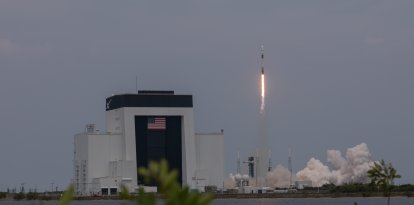Scientists discover North America 'leaking' into Earth's mantle
According to a new seismic map, an ancient slab of crust, located more than 375 miles deep, is pulling down rocks from across the continent.

Arizona from a satellite
Scientists at the University of Texas have discovered that the United States is 'leaking' into the Earth's mantle.
The study, published in Nature Geoscience, explains how the phenomenon called 'cratonic dripping,' constitutes a fragmentation of the base of the continent into rock masses, a process that could be driven by the debris of an ancient tectonic plate sinking into the Earth's mantle.
According to the study, "continental cratons are characterized by thick lithospheric roots that remain intact for billions of years. However, some cratonic roots appear to have thinned or been completely eliminated."
According to the scientists, "seismic images show extensive 'trickle' features that suggest transport of lithospheric materials from the base of the craton, beneath the central United States, to the mantle transition zone and thus active lithospheric thinning."
This is the first time this phenomenon has been captured in action
According to a new seismic map, an ancient slab of crust, which lies more than 375 miles deep, is pulling down rocks from all over the continent.
The uniqueness of this discovery is that this is the first time that cratonic thinning has been captured in action.
These 'trickles' are localized in the Midwest, under an area spanning from Michigan to Nebraska and Alabama, but their presence appears to be affecting the entire continent.
The principal investigator of the study, Julin Hua, said the plate appears to be interacting with material from all over the craton, spanning most of the United States and part of Canada.
This discovery helps to understand the life cycle of the continents
According to Thorsten Becker, co-author of the research, this discovery is important for geologists studying the life cycle of continents.
"This kind of data is important if we want to understand how a planet has evolved over time," Becker explained. "It helps us understand how continents form, how they fragment and how they recycle."
Despite this impressive finding, scientists say this phenomenon will diminish as the plate remnants sink further into the mantle and stop interacting at the base of the craton.
There is also no reason for alarm as these processes unfold on geologic time scales that are extremely slow.
Lexicon
The lithosphere: the solid rocky layer that forms the outer part of the Earth, composed of the crust and the upper part of the mantle, and is divided into lithospheric plates that move and generate phenomena such as earthquakes and volcanoes.
The lithospheric roots: refer to the deep, underlying extensions of the Earth's crust, which dip submerge or fold beneath the surface, forming the roots of mountains and lithospheric plates.
A craton or cratogen: is a continental mass arrived at such a state of rigidity in the distant geologic past that, since then, it has not undergone fragmentation or deformation, having been unaffected by orogenic movements.
The continental cratons: are the most ancient and stable zones of the continents, formed by very old and rigid rocks that have not been affected by orogenic movements, that is, have not undergone fragmentation or deformation.
RECOMMENDATION





















